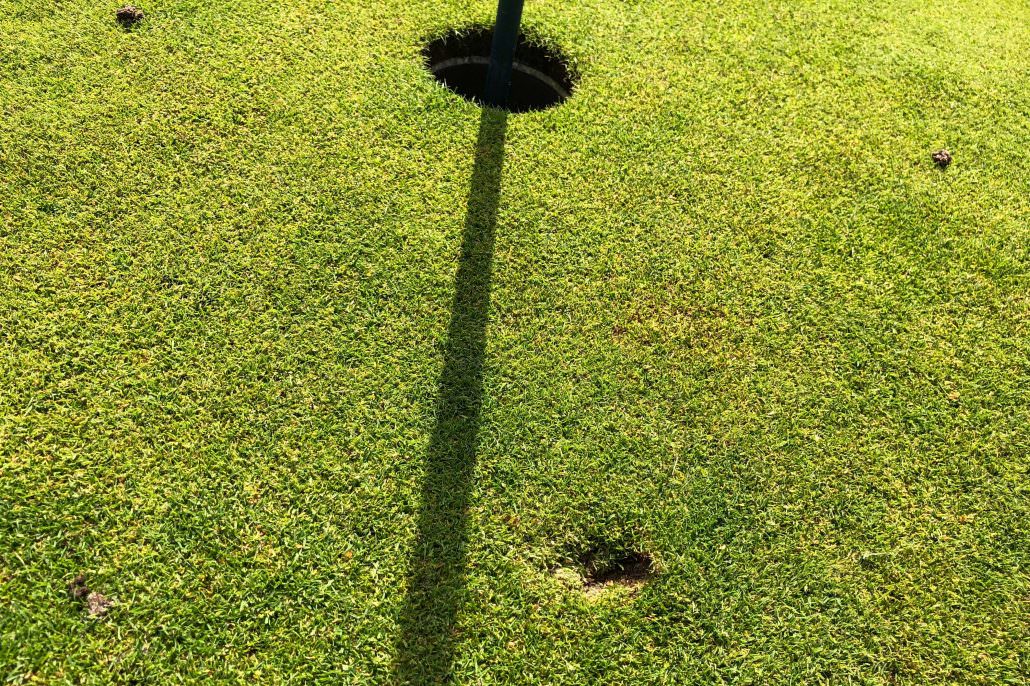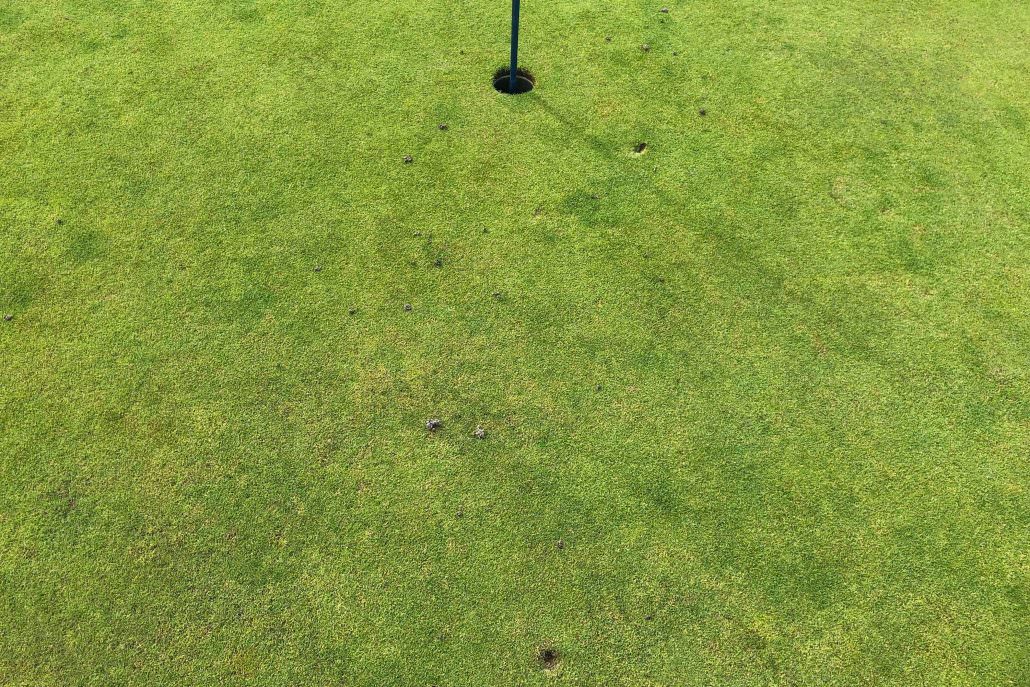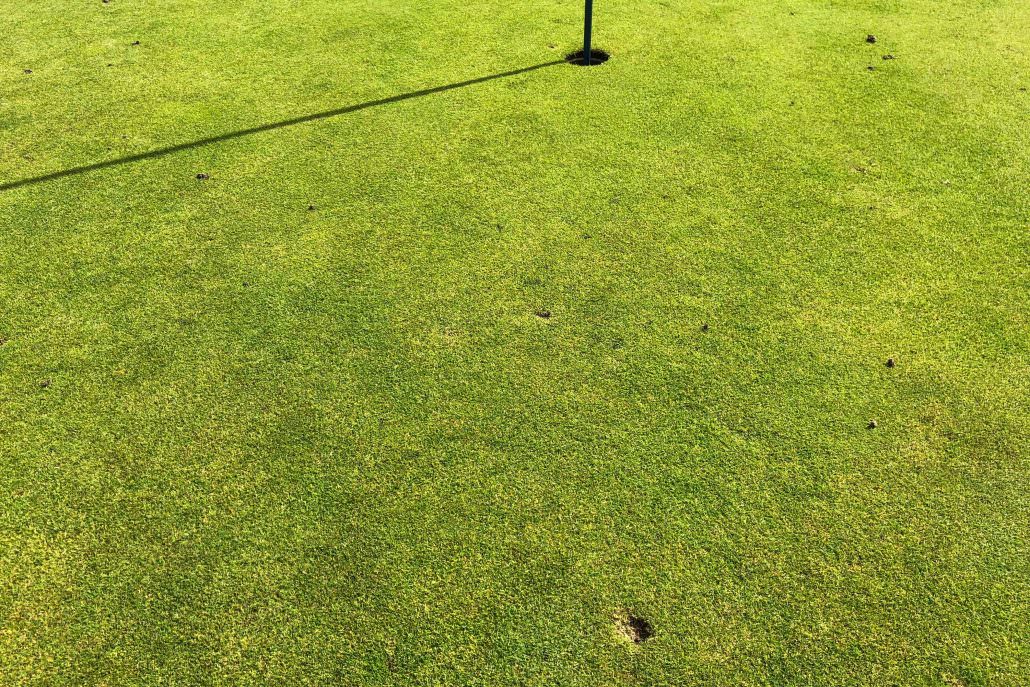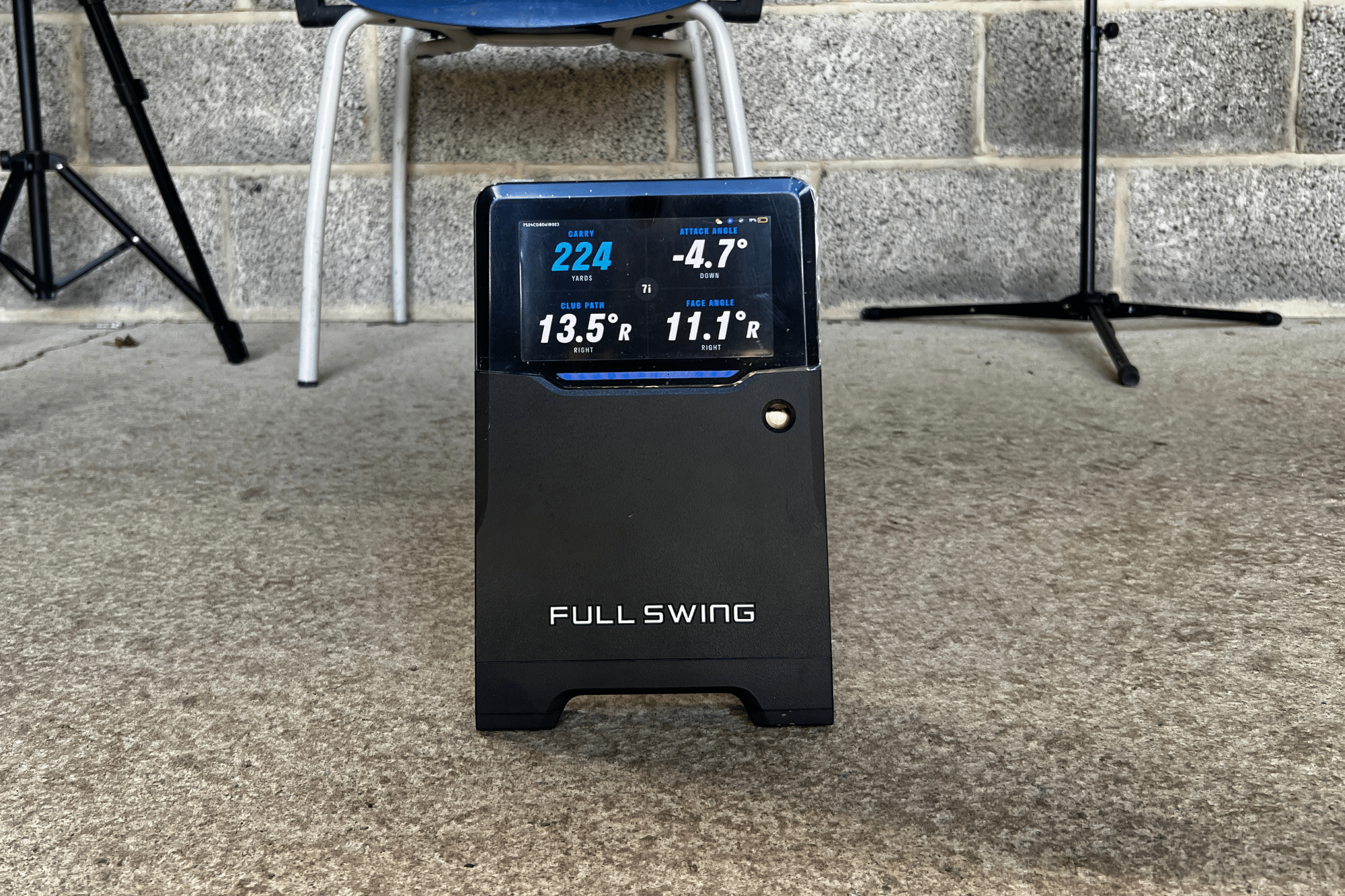
Who’d be a greenkeeper? We don’t deserve them
As practice ranges go, this one is top drawer – a wide green with three different flag positions, and two deep bunkers. But that’s only the start.
The two par 3s, the latter over water, are the remnants of a time when a 9-hole academy course was in the offing.
Now they are the shining lights of a warm-up and teaching facility that’s the envy of many a club in our area.
But I dread to think what our course manager felt when he made his way down there on Monday morning. His heart must have sunk.
It was partly a question of circumstance. We’re building a new driving range and hotel at Sandburn Hall and, for a few brief weeks, our practice area doubled as a temporary place to tee up more than just a short iron.
Habits form quickly. Even though a sturdy net is now in place to give us all a new option until our sparkling range is built, the scene I saw on Saturday afternoon was more golfing war zone than a place to firm up your game.

The pitch marks were fresh and deep – not the legacy of weeks of X-cross outs launched in preparation for a run at the monthly medal but the assault of inconsiderate golfers who think there’s always someone else tidying up behind them.
A day later and I was 95 miles north, at Close House, where I’m a country member. The Filly course, the smaller of the two at this golfing paradise that will host the British Masters again next year, was rammed.
The World Transplant Games was getting ready to be staged at the club and many of the participants were mingling in with members and visitors taking advantage of a fine summer’s afternoon.
If you’re going to play late on a busy day, you don’t expect the greens to be carpets. You do hope, though, that players are equipped with a pitchfork and the basic manners to clean up their damage.

I wasn’t sure how the greenkeepers would get some of those putting surfaces ready for competition play, such was the hammering they had taken.
I suspect, though, it’s just a regular Monday for those who choose this to be their profession.
There’s no point in handing out another lecture about fixing pitch marks and raking bunkers.
We’ve heard it a thousand times before. We’ve all seen the grief stricken tweets from greenkeepers bereft at what we’ve done to their beloved course. Nothing changes.
And yet there’s a familiar moan in the air at our courses right now. The mid-summer renovation programme is in full swing and sandy greens, in competition season, bring out the worst in us.
You can spend all the time you want patiently explaining why maintenance is vital if we want to be playing on healthy greens and not spending the entire winter on temps.

But once that three-footer for an 89 takes a slight diversion left, instead of dropping into the hole, it’s open season on the greenkeepers.
That’s when we’re not complaining about why this bunker wasn’t raked properly (we probably didn’t do it right that’s why), or how that tee box wasn’t spirit level straight.
Frankly, I don’t know how they keep their patience. And I don’t understand how we have the nerve to give them stick when we can’t find 10 seconds to repair a crevice on a putting surface.
Plenty of you are now furiously tapping into your keyboards. Of course you always repair your pitch marks, and two others to boot.
You must look like Pinocchio. If everyone did what they claim, there wouldn’t be a problem, would there?
Just look at these pictures, though – and yes, they are two different photos – and remember those images next time you’re about to sound off as the tractors layer the sand onto your greens.
Because we all demand so much from our greens staff but, really, we don’t deserve anything at all.
Steve Carroll

A journalist for 25 years, Steve has been immersed in club golf for almost as long. A former club captain, he has passed the Level 3 Rules of Golf exam with distinction having attended the R&A's prestigious Tournament Administrators and Referees Seminar.
Steve has officiated at a host of high-profile tournaments, including Open Regional Qualifying, PGA Fourball Championship, English Men's Senior Amateur, and the North of England Amateur Championship. In 2023, he made his international debut as part of the team that refereed England vs Switzerland U16 girls.
A part of NCG's Top 100s panel, Steve has a particular love of links golf and is frantically trying to restore his single-figure handicap. He currently floats at around 11.
Steve plays at Close House, in Newcastle, and York GC, where he is a member of the club's matches and competitions committee and referees the annual 36-hole scratch York Rose Bowl.
Having studied history at Newcastle University, he became a journalist having passed his NTCJ exams at Darlington College of Technology.
What's in Steve's bag: TaylorMade Stealth 2 driver, 3-wood, and hybrids; TaylorMade Stealth 2 irons; TaylorMade Hi-Toe, Ping ChipR, Sik Putter.










